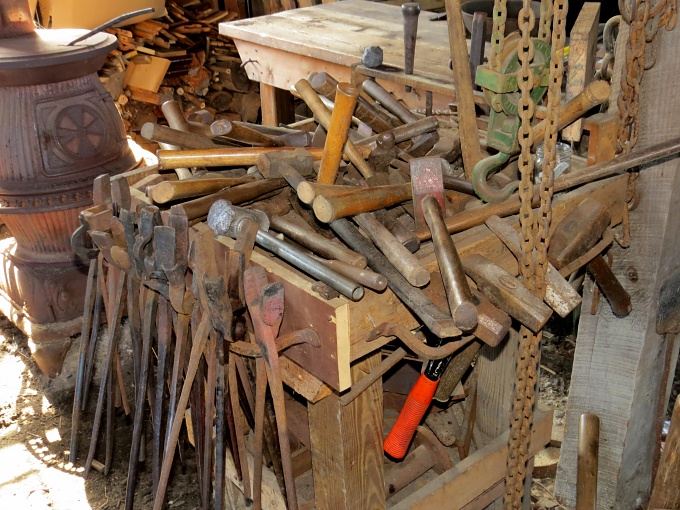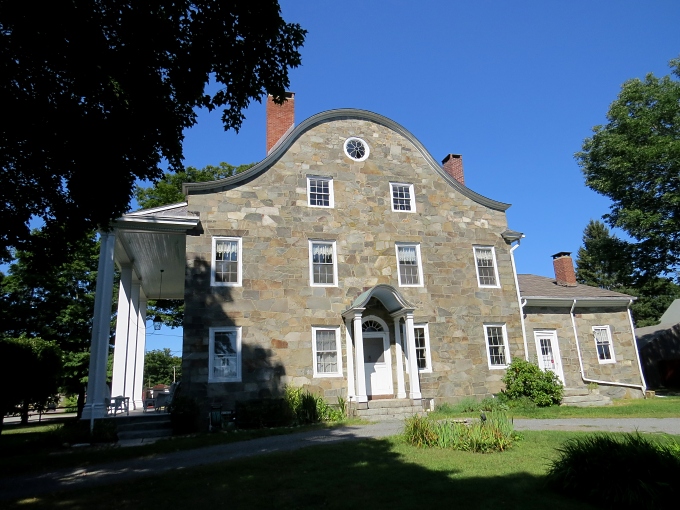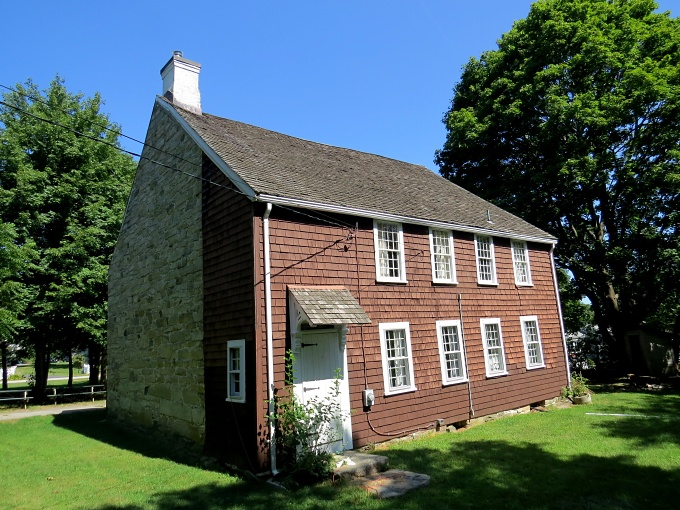Great Road
/“Travel through three hundred years in three miles.” That's what the brochure touts when it describes Great Road in Lincoln, Rhode Island. Right off the bat, you know there must be something special about the road for people to have named it “Great”.
Construction of one of the earliest colonial roads in the area began in the 1660's and was completed around 1683. This major thoroughfare on the west side of the Blackstone River connected Providence, RI with Mendon, MA, the first English settlement in south central Massachusetts and was extended in the late 18th century to Worcester, MA, county seat and industrial center. Sections of the road followed footpaths used for centuries by Native Americans and it's a stretch of road still traveled today. I'd read about it when we visited Pawtucket, RI a few weeks ago and thought it might be an interesting Sunday getaway, so we packed a lunch and headed to Lincoln.
We nearly whizzed past the Eleazer Arnold House. It sits on the highway (Great Road) with modern houses around it. It's easy to miss, but once we pulled up along side, we were glad we did. Old square nails in the weathered clapboards, a well-used wrought-iron door knocker and small diamond-pattern leaded glass windows left no doubt that this house belonged to another era. Restoration was in progress and scaffolding obscured the west side of the house which was a disappointment since this house is considered a fine extant example of a “stone-ender”, where the entire end of the house is dedicated to a massive stone chimney.
We passed by several other older buildings, many in disrepair, like the old Moffett Mill, strategically situated on the banks of the Moshassuck River which provided power for this early 19th century machine shop. There was no place to stop along this narrow stretch of road, but I nicked a picture off the web so you could see it.
We continued on to find the gem of the day … the Hannaway Blacksmith Shop. William Hannaway operated a blacksmith shop in this building from the late 19th century until the 1920's.
There was a smithy at work (Ed) and a young apprentice (Sam), giving demonstrations.
This was right up David's alley and he listened raptly as Ed explained the history and basics of blacksmithing.
Hearthside (1810-11) was dubbed “the house that love built”. The story goes that a young gentlemen won a large sum of money in a lottery and decided to build a house to woo a young woman of whom he was very fond. He built the mansion and showed it to her, hoping for some positive reinforcement on the relationship. She remarked it was beautiful, but no one in their right mind would ever consider living way out here in the middle of nowhere. Well, that dashed his hopes. He didn't propose, he never married and he never lived in the house.
We thought it was a beauty with a distinctive ogee gable on the side elevations and rose windows.
The Valentine Whitman house (c. 1694) took us back to the colonial period and provided a good view and example of a stone-ender after all. Huge, locally quarried granite slabs were used as the front steps to the entrance. Electrical wires and a meter provided evidence of modern day amenities which kind of spoiled the allure. Now located in a neighborhood, this house and the others we saw were once totally isolated and miles from their nearest neighbors and the town.
I guess living on the outskirts of civilization is sort of like being at sea or in a remote anchorage for weeks on end, having to rely on ourselves and our (limited) wits to get along. We do, however, get to decide when we want to be isolated and when we'd rather be close to a well-stocked supermarket.
So, was the Great Road great? In our humble opinions, it was just moderately good, but of course, we had lots of other roads from which to choose.
Stay tuned for our further adventures in the Blackstone River Valley National Heritage Corridor.










